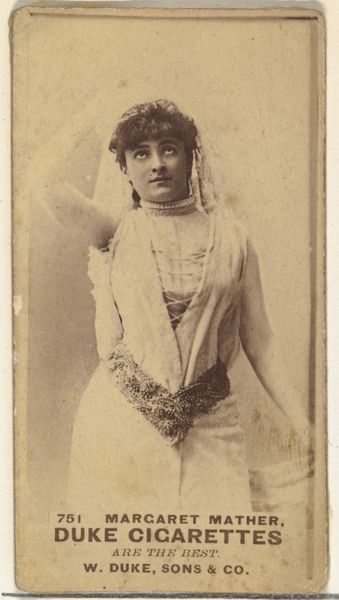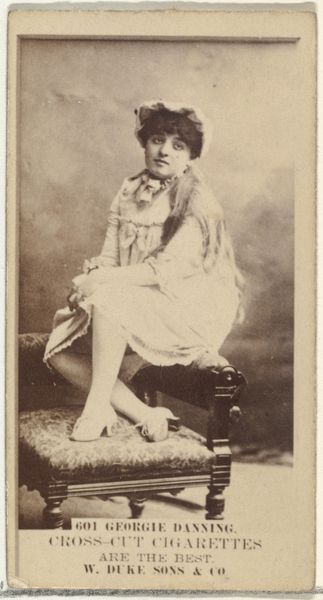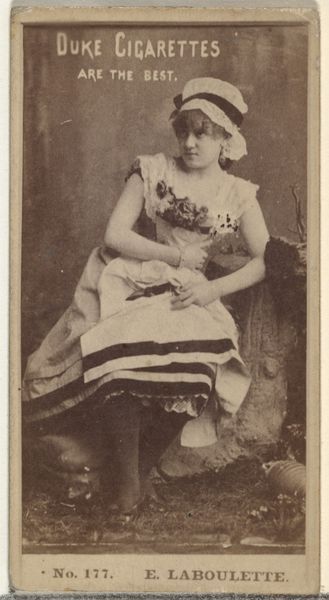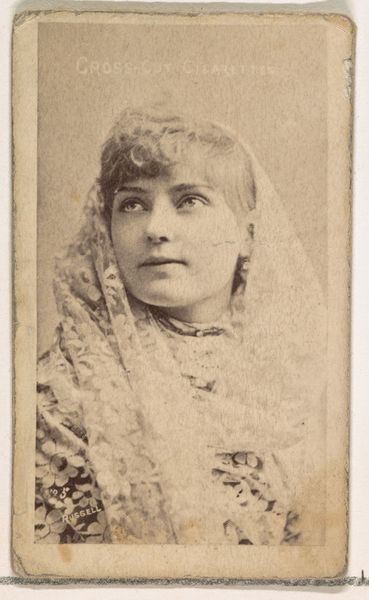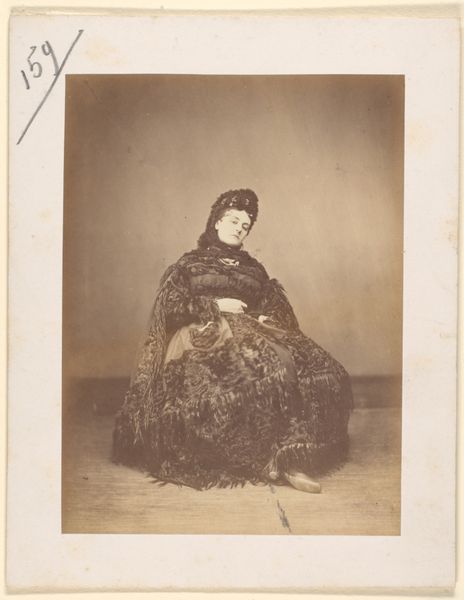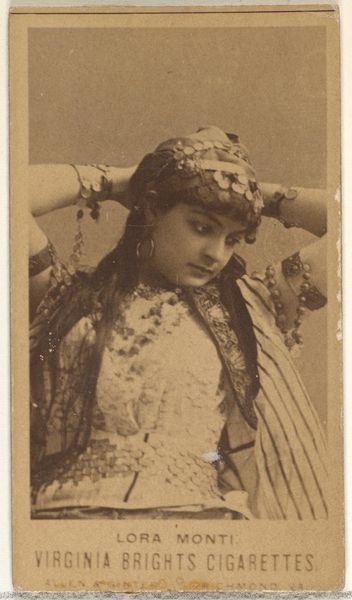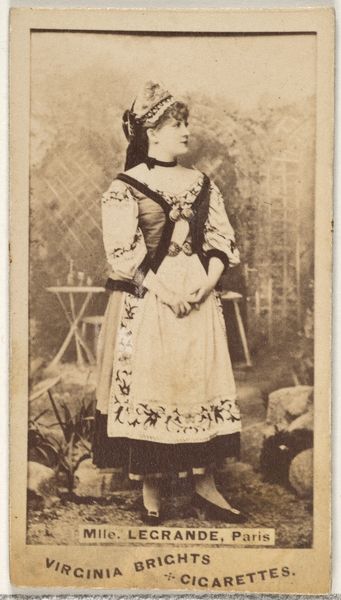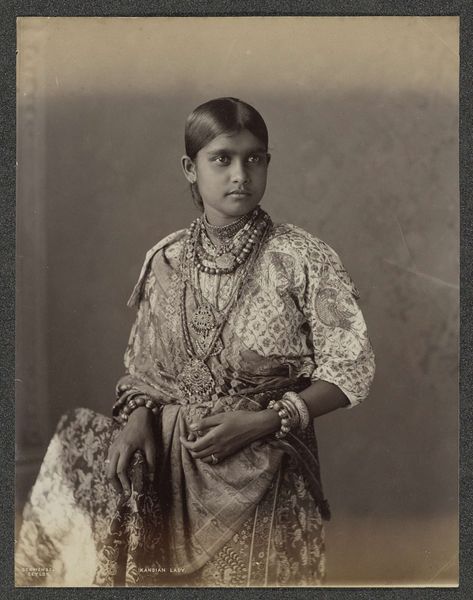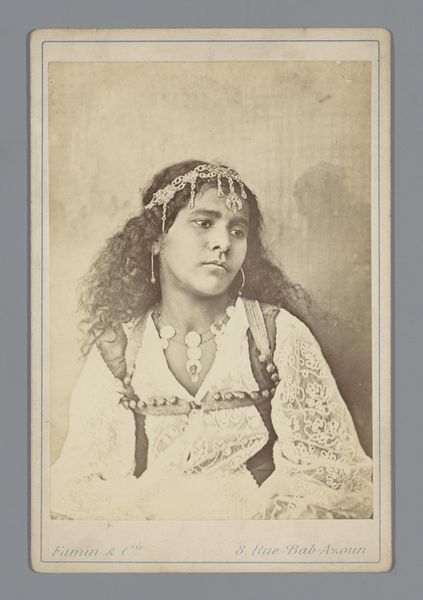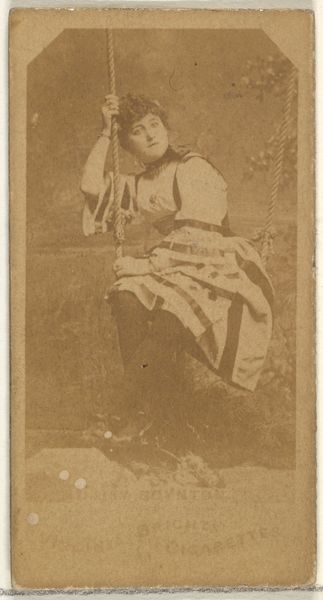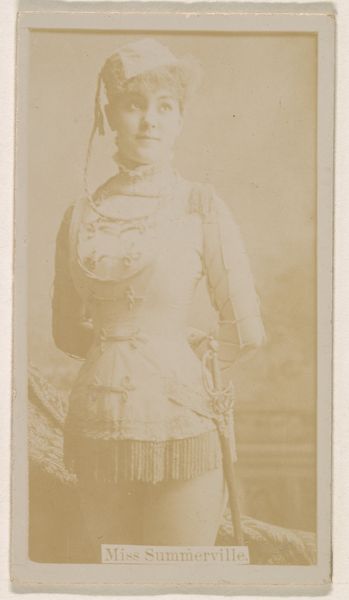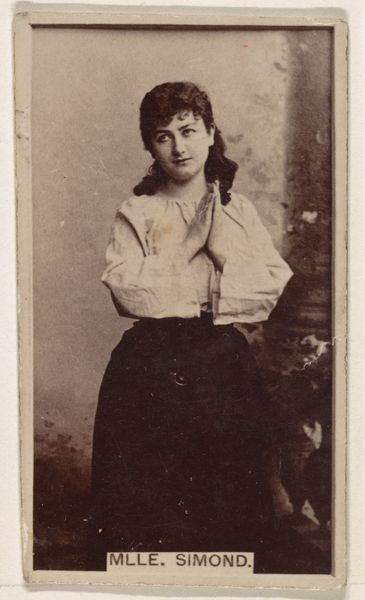![Untitled [Egyptian dancing girl] by Hippolyte Arnoux](/_next/image?url=https%3A%2F%2Fd2w8kbdekdi1gv.cloudfront.net%2FeyJidWNrZXQiOiAiYXJ0ZXJhLWltYWdlcy1idWNrZXQiLCAia2V5IjogImFydHdvcmtzL2Y3ZjgzMzdkLWM2NDItNDE4ZC05MTVkLThlYTdiNmM0MWM4MS9mN2Y4MzM3ZC1jNjQyLTQxOGQtOTE1ZC04ZWE3YjZjNDFjODFfZnVsbC5qcGciLCAiZWRpdHMiOiB7InJlc2l6ZSI6IHsid2lkdGgiOiAxOTIwLCAiaGVpZ2h0IjogMTkyMCwgImZpdCI6ICJpbnNpZGUifX19&w=3840&q=75)
albumen-print, photography, albumen-print
#
albumen-print
#
portrait
#
ancient-egyptian-art
#
photography
#
egypt
#
genre-painting
#
albumen-print
Dimensions: 11 x 8 1/2 in. (27.94 x 21.59 cm) (image)14 x 11 in. (35.56 x 27.94 cm) (mount)
Copyright: Public Domain
Editor: Here we have a nineteenth-century albumen print, titled “Untitled [Egyptian dancing girl],” created by Hippolyte Arnoux. It’s a sepia-toned photograph of a young woman… something about her eyes, maybe the way she’s holding that tambourine… it’s really quite haunting. What draws your eye when you look at this piece? Curator: Haunting is a wonderful word for it. For me, the whole image shimmers with a kind of fabricated exoticism, doesn’t it? The backdrop feels staged, theatrical almost. Like a peek into someone’s imagination of Egypt, rather than Egypt itself. What do you think? Is she *really* Egyptian, or playing a part? Editor: I hadn’t thought of it that way! You're right, it feels very posed, like a scene from an Orientalist painting, but captured with the supposedly objective eye of the camera. So is Arnoux participating in that fantasy, do you think, or just documenting it? Curator: Oh, absolutely participating! The photographer isn’t just a passive observer; he’s carefully constructing this image. Consider the lighting, the costume, her posture… they’re all carefully chosen to create a specific impression for a Western audience hungry for exotic tales. She is both subject and object in this colonial dance. Editor: It's unsettling, almost. I thought photography always offered the truth. So this image is selling something more, or less, than reality? Curator: Indeed, but, here's the paradox. Perhaps her reality wasn’t so very different. This photograph gives her presence an agency across time; who are we to suggest our truth is better than theirs, now forever fixed in sepia. Editor: That’s a fascinating perspective. It makes you wonder about the stories *behind* the photograph, beyond just the image itself. Curator: Exactly. It's a reminder that every photograph, every work of art, really, is a conversation – a carefully constructed exchange, or an accident, depending on your view of the maker's practice, and never a straightforward transcription. Editor: Well, I definitely see it with fresh eyes now, less a window into the past and more like a mirror reflecting our own ideas about the past. Thanks for that!
Comments
No comments
Be the first to comment and join the conversation on the ultimate creative platform.
